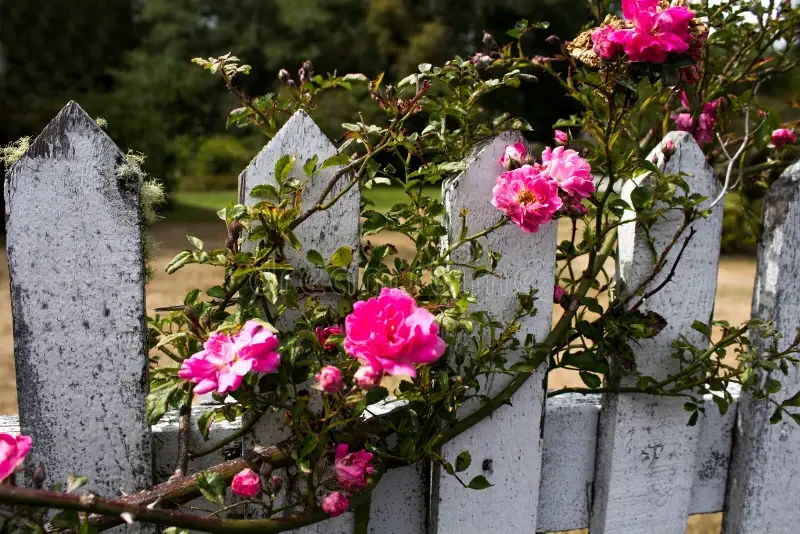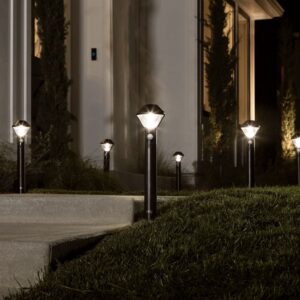
Spring is here, Texas! 🌿
It’s the perfect time to freshen up your yard and make your home safer. With the right landscaping, you can boost curb appeal while adding another layer of security. From thorny shrubs to smart placement, your outdoor space can help deter intruders—without sacrificing style. Here’s how to design a yard that’s both beautiful and protective, perfectly suited for Texas weather.
Security Landscaping Concept & Plant Selection
Security-focused landscaping (sometimes called “defensive landscaping”) uses natural elements to deter criminal activity. The approach follows two main principles:
- Natural surveillance – Designing spaces that remain visible to neighbors and passersby
- Access control – Using plants as barriers to guide visitors to proper entrances and block unauthorized access points
Texas-hardy thorny plants create natural deterrents around windows, fences, and property boundaries:
- Texas Native Roses – Varieties like Cherokee Rose provide beautiful blooms with serious thorns
- Agave – Sharp-tipped plants that thrive in Texas heat and require minimal water
- Bougainvillea – Colorful flowering vines with thorny stems that can be trained along walls and fences
- Barrel Cactus – Distinctive round shape with prominent spines, perfect for xeriscape designs
- Yucca – Architectural plants with sharp leaf tips that add southwestern character
When placing plants near your home’s foundation, keep shrubs below window height, maintain 2-3 feet of space between larger plants and Trim lower branches of trees to maintain at least 7 feet of clearance from the ground.
Security-Enhancing Landscape Features
 Gravel Perimeters
Gravel Perimeters
Create pathways or borders using crushed granite or river rock. These materials make noise when walked upon, serving as an audible alert, require minimal maintenance in Texas heat, provide drainage during spring storms and complement native Texas landscaping aesthetics.
Strategic Lighting Integration
Pair your spring planting with thoughtful lighting, install solar-powered path lights along walkways and use uplighting on key trees to eliminate dark corners. Consider motion-sensor floods near vulnerable areas and choose lighting fixtures that complement your landscape design.
Fencing Considerations
Enhance security fencing with natural elements. Train climbing roses or bougainvillea along fence lines, use ornamental grasses to disguise fence bottoms where digging could occur and plant dense hedges as additional barriers inside fence lines. Don’t forget, Sentry offers fence repair as well!
Beyond Plants: Hardscape Security Elements
 Give your yard a security-savvy refresh this spring by blending beauty with function. Try decorative stone borders to subtly define your property lines and discourage trespassing. Add well-lit pathways to guide guests to your front door while keeping shadows—and hiding spots—to a minimum. Create inviting outdoor seating areas that not only enhance your space but also increase natural surveillance around your property. And for a stylish touch that pulls double duty, consider a water feature—it adds peaceful ambiance while helping you notice unexpected movement through sound. With these simple upgrades, your landscape becomes a beautiful extension of your home’s security.
Give your yard a security-savvy refresh this spring by blending beauty with function. Try decorative stone borders to subtly define your property lines and discourage trespassing. Add well-lit pathways to guide guests to your front door while keeping shadows—and hiding spots—to a minimum. Create inviting outdoor seating areas that not only enhance your space but also increase natural surveillance around your property. And for a stylish touch that pulls double duty, consider a water feature—it adds peaceful ambiance while helping you notice unexpected movement through sound. With these simple upgrades, your landscape becomes a beautiful extension of your home’s security.
Spring Planting Timeline for Texas Security Landscaping
In Texas, spring shows up early, so smart landscaping starts sooner, too. In early spring (February–March), it’s the perfect time to plant larger trees and shrubs that can double as natural privacy screens. By mid-spring (March–April), bring your yard to life with perennials and ornamental grasses that add color and texture while limiting open sightlines. Then, as late spring (April–May) rolls in, plant summer-blooming barrier plants before the heat kicks in—these not only thrive in Texas weather but also help define and protect your space. Thoughtfully designed, your spring landscaping can look stunning and serve as a quiet layer of security that works all year long.




Recent Comments